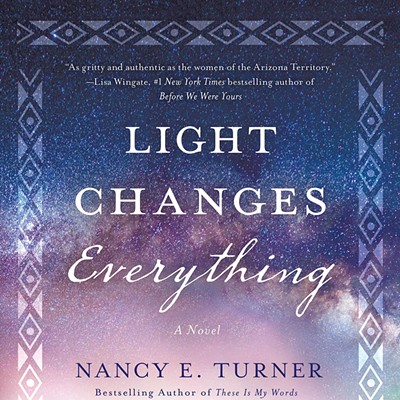Or is it? Not according to Earl Ganz, who has resurrected the forgotten novelist Myron Brinig and made his life story into a novel, The Taos Truth Game. Brinig, who delivers this rather morose line in the book's opening scene, found fleeting literary fame during the '30s, rolled with the literary jet set and wrote a book that became a movie starring Bette Davis, but he faded into obscurity before his death in 1991. In this half-real, half-imagined account of Brinig's early life, Ganz renders a well-researched, affectionate portrait of a lost season in literature: that belonging to 1930s Taos, N.M., where an eccentric, wealthy woman named Mabel Dodge Luhan surrounded herself with the literary elite and socialized the Depression away.
Brinig was not only a Jew; he was gay--both dangerous qualities for an American man trying to find success in the cultural scene of the 1930s. According to Ganz, Brinig was the first Western novelist to write about homosexuality, and one of the first to write about the Jewish-immigrant experience. At the beginning of The Taos Truth Game, Myron is coming off the success of his novel Singermann, and he's at his peak, both personally and professionally. He meets a young artist named Cady Wells and falls in love. The eccentric, manipulative Mabel becomes Myron's confidante and friend, but also his harshest critic, willing at all times to sabotage him for her own advances.
An immensely productive writer, Brinig spends long seasons working in Taos and mingling with the other artists who pass through. But then Cady leaves him, a string of calamities occurs among his eccentric group of friends, and he stalls on a novel that threatens to end his friendship with Mabel. Ganz ends the book as World War II is just beginning, so we don't see Myron's slide into obscurity. But enough happens in the 20 years covered to merit the book's 326 pages: violent breakups, betrayals, disease and just a hint of sex.
Imagining yourself into the head of a writer is a formidable challenge, made more so when the writer is dead. Myron is an entertaining character, but unfortunately, Ganz doesn't show us the complex, analytical thought processes one presumes a successful novelist would have. "Women are crazy," he thinks; "Why don't homosexuals have lasting relationships?" he wonders. A fuller version of Myron would find him answering--or attempting to answer--concerns like this. Such trite statements undercut the brilliance we're supposed to be convinced of. And while we know that Brinig is a writing machine (he finished 21 novels in his lifetime), we learn almost nothing about the creative process. Perhaps Ganz didn't want to presume to know what was going on in Myron's head. But this man, above all else, was a writer, and while we learn about his love affairs, his favorite drinks and his cross-country travels, we lose him at the moment he sits down to write.
While the content is mostly entertaining, The Taos Truth Game has no distinct central narrative, no building suspense. You can say, perhaps, that this is because there was no narrative or suspense in Brinig's real life, but why make it a novel if you're not going to make it seem so? Ganz does throw in a few surprises and scandals, but their effect is fleeting, especially since he's careless about keeping track of who's who and who's where. All this jumping around makes his characters seem fragmented. Cady is boyish and cutesy one moment; the next, he's inexplicably distant. Myron, who seems mostly even-tempered, suddenly becomes murderous.
The book is most entertaining when the literary glitterati, including Gertrude Stein, Robert Frost and Thomas Wolfe, make cameos. Stein makes a hilarious appearance at a dinner party, and Myron comes to life as he makes fun of her. These dalliances with celebrity writers give Brinig his own sheen, as though some of their fairy dust brushed off on him. He mixes easily with the elite, sharing bourbon with Wolfe, laughing at Stein's poetry and chatting with Philip Roth about getting old. At these moments, we finally spy the writer in him.
While the act of the tribute itself is touching, the book, to its credit, is not sentimental. Ganz doesn't lionize Brinig. Brinig has plenty of faults, including jealousy, anger and selfishness, which affect his career as a writer, a friend and a lover. Ganz could easily have inflated Brinig, but his means are much more subtle. You don't put The Taos Truth Game down thinking that Myron Brinig was a hero, a genius or Philip Roth. But you do want to track down a copy of Singermann. And this is Ganz's greatest success.
The Taos Truth Game
BY EARL GANZ
UNIVERSITY OF NEW MEXICO PRESS
326 PAGES, $24.95








